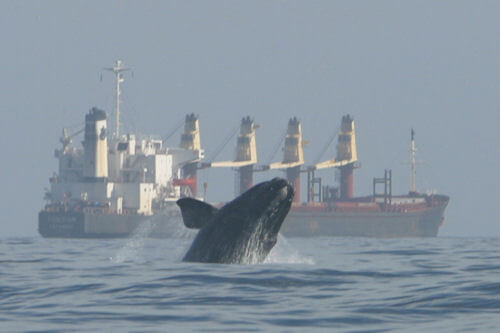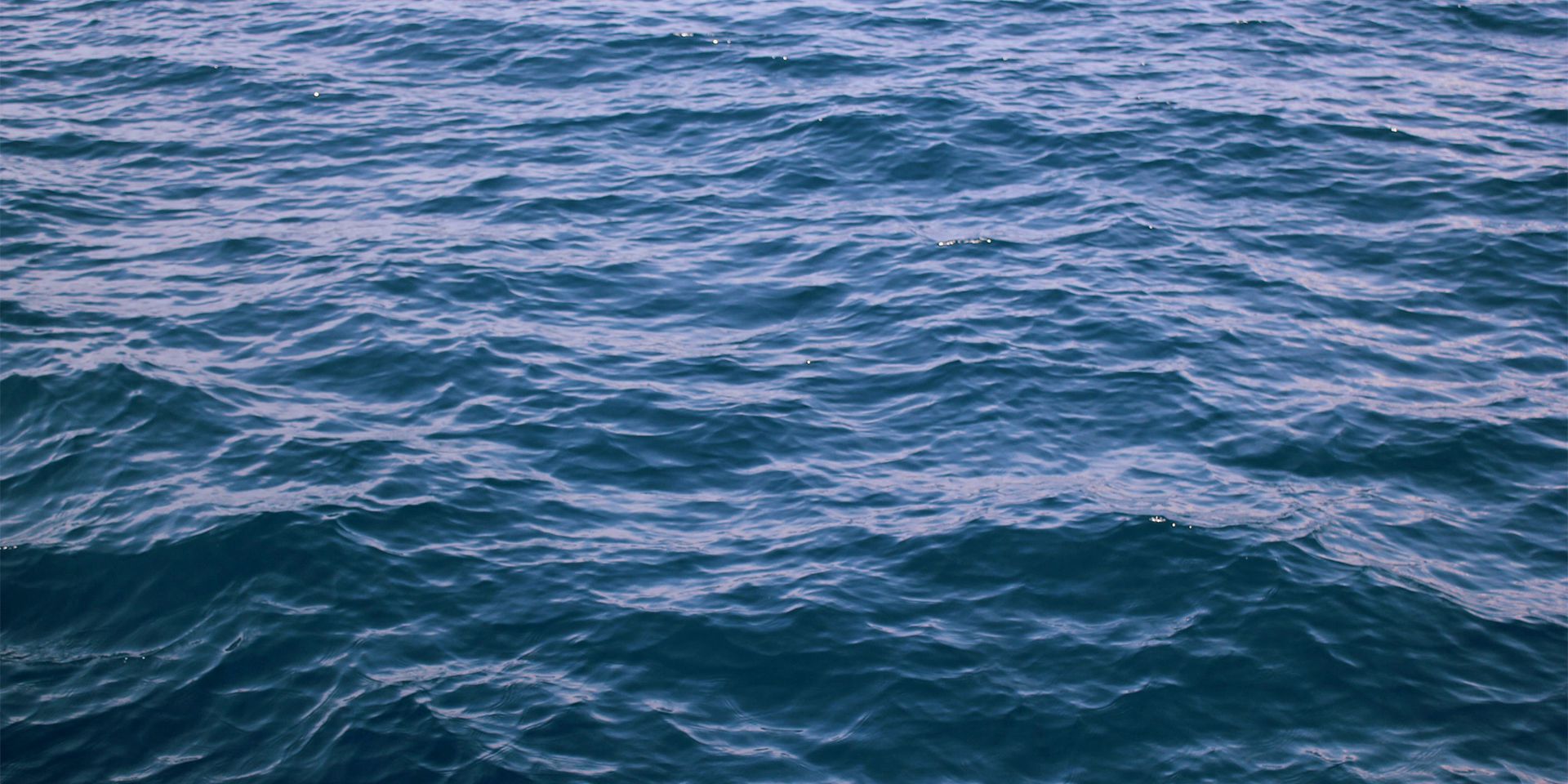Ship Strikes and Right Whales

Right whale and ship. (Florida Fish and Wildlife Conservation Commission)
Almost all lethal ship strikes on right whales have involved massive injuries indicating that they were hit by large vessels. In 2001, the National Marine Fisheries Service (NMFS), in cooperation with the U.S. Coast Guard, began developing a ship-strike reduction strategy based on recommendations by the ship strike subcommittee of an advisory group established by the agency (the Northeast Implementation Team). The core elements of the strategy involved measures to route ships through areas where right whales were least likely to occur. Where that was not expected to be adequate, the strategy proposed the establishment of zones requiring reduced speed. The routing measures were patterned after a shift in vessel traffic lanes by the Canadian Department of Fisheries and Oceans and Transport Canada in the northeastern Gulf of Maine in 2003, which was the first such alteration in shipping lanes expressly for the protection of right whales or any other large whale.
The first measure implemented in the United States under the strategy was the designation of new shipping lanes off ports adjacent to the right whale calving grounds in 2006 (see pages 61-62 in our 2006 annual report). In 2009, two other routing measures were implemented: a shift in the route of shipping lanes off Boston Harbor through areas used less often by right whales, and the designation of certain waters in the Great South Channel off Cape Cod as an “Area To Be Avoided” by ships (see pages in 2009 annual report). Such routing measures are not mandatory, but most large ships follow them once they are added to nautical charts.
In June 2006, NMFS also proposed a rule to require that vessels longer than 65 feet to use speeds of 10 knots or less during periods of peak right whale occurrence off half a dozen ports along the migratory corridor between New York and Georgia, in calving areas off Florida and Georgia, and in feeding areas off Massachusetts (71 Fed. Reg. 36299). On August 15, 2006 the Commission wrote to NMFS expressing support for the proposal and on October 10, 2008 NMFS published a final rule (73 Fed. Reg. 60173) implementing ten seasonal management areas for large ships that restricted their speeds to 10 knots or less beginning on December 9, 2008. However, to gain necessary approval, NMFS had to reduce the size of some management areas, make some zones voluntary, and limit the rule’s time period to five years, during which the rule’s effectiveness would be assessed (see pages 111-112 in our 2008 annual report).
On June 6, 2013, as the five-year anniversary of the adopted rule approached, NMFS proposed to amend the rule by eliminating the sunset provision, thereby extending the current restrictions indefinitely (78 Fed. Reg. 34024). Agency analyses of data collected over the first three years of the five-year effective period concluded that sufficient information to assess effectiveness was not yet available and an uncertain amount of additional time would be needed to collect and analyze more data. To help assess the rule’s effectiveness, the Commission initiated a study of right whale carcasses with evidence of ship strikes in and near the seasonal management areas to determine if the rates of vessel-related deaths had changed since the rule went into effect. The analysis found that no vessel-related right whale deaths had been documented within 45 nautical miles of any established seasonal management area during the effective time frames since the rules had gone into effect in December 2008. This was a statistically significant reduction compared to 18 years of pre-rule carcass discovery rates and was twice as long as the longest previous period without discovery of a dead ship-struck whale within those areas. On August 5, 2013 the Commission wrote to NMFS in support of the proposed rule extension and provided preliminary results of the study.
On December 9, 2013 NMFS adopted a final rule extending ship speed restrictions indefinitely. At the same time, NMFS stated that it would consider a recommended change in the rule submitted by the American Pilots Association to be a petition for new rulemaking. The petition requested that all federally maintained dredged channels between New York and Florida be exempted from the speed restrictions on the grounds that using speeds of 10 knots or less reduced vessel maneuverability and was therefore unsafe. On January 30, 2014, NMFS requested comments on the petition and on March 4, 2014 we replied recommending that it be denied. We noted that existing rules already allowed vessels to use speeds above 10 knots in regulated areas if vessel captains believed conditions required higher speeds for safety purposes and recorded those reasons in the vessel log. We also noted that, because the percentage of vessels using dredged channels was likely as great before as after the rule went into effect, most pre-rule lethal ship strikes had probably occurred within those channels. Therefore, exempting such channels would undermine the rule’s effectiveness. On 15 October 2015, NMFS announced a decision to deny the petitioned rule change, leaving its speed restrictions in place and unchanged.
On May 5th, 2016, a dead right whale calf stranded on a remote island south of Chatham on Cape Cod, Massachusetts. Massive propeller wounds indicated that it had been killed by a large vessel. The calf, previously seen alive with its mother just a few days earlier in Cape Cod Bay, was estimated to have died two to four days prior to its necropsy on May 6th. A drift analysis suggested that the calf had been struck in the Race Point special management area, which requires large ships to limit their speed to 10 knots between March 1st and April 30th. The whale therefore apparently had been struck just a few days after the seasonally effective period for the area had ended. On April 13th 2017, a juvenile right whale was found dead from being struck off Barnstable, Massachusetts, in Cape Cod Bay. With speed restrictions for Cape Cod Bay in effect from January 1st to May 15th, this was the first ship strike death documented in or near any effective seasonal management zone since the speed rules went into effect in late 2008. Whereas deaths due to ship strikes in U.S. waters had averaged about 1 per year during the 18 years before the 2008 rule, since 2008 they have averaged less half of that (i.e., 0.47 deaths per year) even with these two recent deaths.
